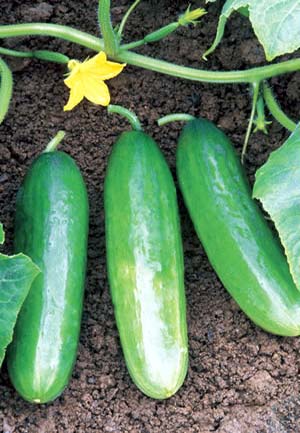|
|
Greenhouse production of cucumbers and capsicums has developed rapidly in the last decade. It provides larger urban areas of Australia with a ready supply of fresh products with minimal transport costs. Other advantages are the more efficient use of water resources, fertilisers and reduced environmental degradation. Protective structures provide a strategic capacity to feed large urban areas and market stability when adverse weather conditions affect outdoor production systems. The project has focussed on major disease problems in greenhouse cucumbers and capsicums. Extensive disease surveillance over the three year course of the project has updated Australian pathogen records. New Australian records include the detection of a whitefly-transmitted virus, a fungal wilt disease and a fungal leaf spot on cucumbers. Wilts associated with fungal root and stem rots were found to contribute to an estimated 30% of crop losses in cucumbers throughout Australia.
Findings :
Acknowledgements : The authors would like to thank the QLD, NSW, SA and WA greenhouse growers who cooperated in our disease surveys and in our on-farm trials. Greenhouse Vegetables NSW, particularly the President, Mr Joe El-Boustani, supported and assisted with surveys and on-farm trials. Vegetable IDOs in NSW (Dr Alison Anderson), QLD (Mathew Dent), SA (Craig Feutrill) and WA (David Ellement) assisted with disease surveys and extension activities. Spray Gro Pty Ltd, Organic Crop Protectants Ltd and Bio-Care Technology Pty Ltd. supplied biological control products for evaluation. Rijk Zwaan Ltd supplied cucumber seeds for trials and their staff, Steve Roberts, Phil Ritchie and Steve Natsias, assisted with disease surveys. Within NSW Agriculture the following have contributed to this project. Mr Lowan Turton, Photographer, assisted with capturing images of disease symptoms and constructing the photographic montages used in this report. Dr Idris Bachia and Lorraine Spohr undertook biometrical analyses. Leigh James, Jeremy Badgery-Parker, Marilyn Steiner and Dr Stephen Goodwin collaborated with extension and training activities, and preparation of technical resources. Technical support was provided for disease diagnostics, literature searches and greenhouse trials by: Dr Mary Ann Terras, Brenda Gorrie, Stacey Azzopardi, Melanie Scanes and Josh Jarvis. This project was funded by Horticulture Australia Ltd through the National Vegetable R&D Levy and by NSW Agriculture. The Australian Government provides matched funding for all HAL’s R&D activities. |
|

